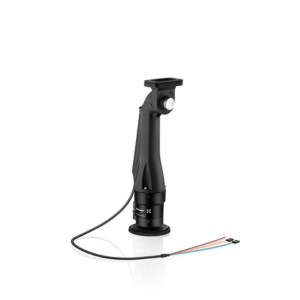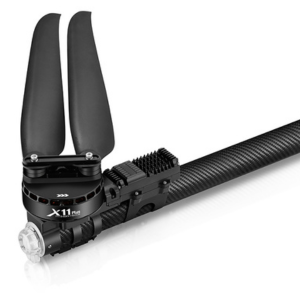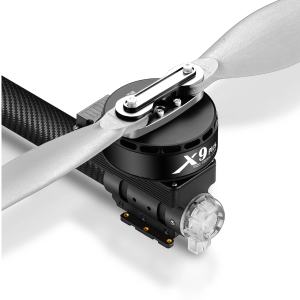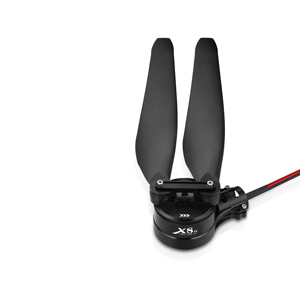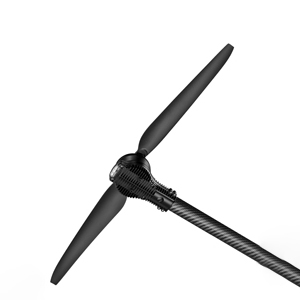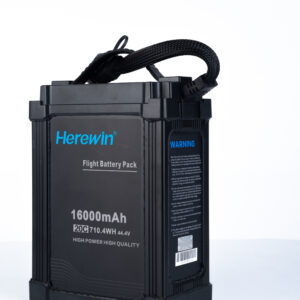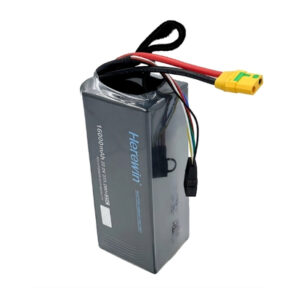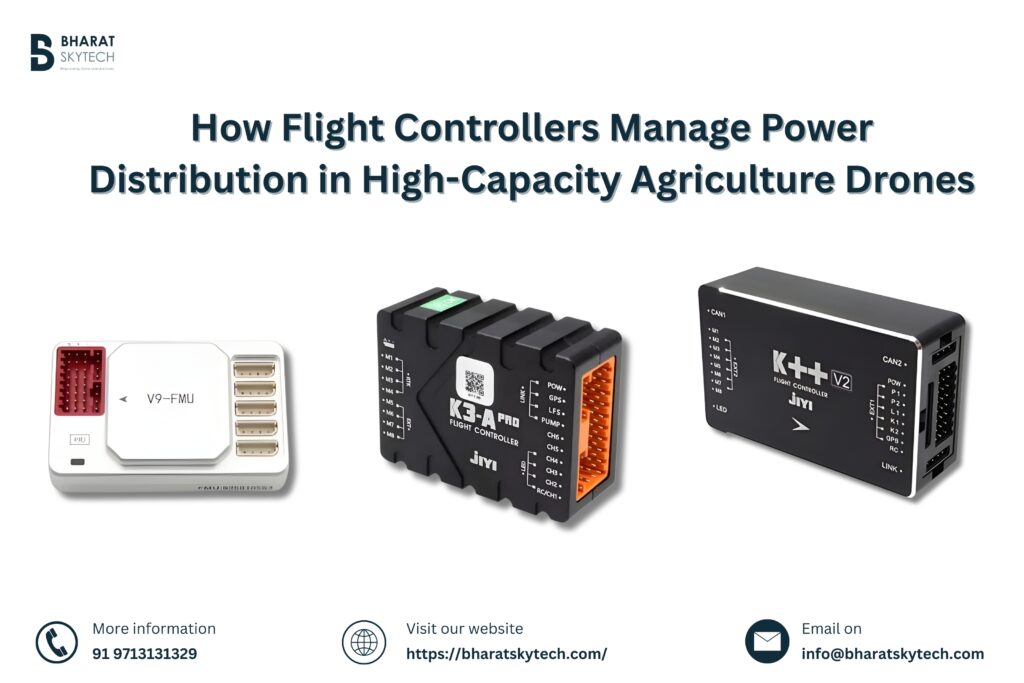
Drone flight controllers play a crucial role in the performance of modern agriculture drones, which have evolved into powerful aerial machines capable of spraying liquid fertilizers, pesticides, or broadcasting seeds across vast farmland. Unlike hobby drones that carry small cameras, agriculture drones handle heavy payloads ranging from 10L to 30L, requiring significantly higher thrust, ultra-stable flight control, and extremely efficient power distribution to operate safely and effectively.
At the centre of this performance is the flight controller, which works closely with the motors, ESCs, power modules, and PDB (Power Distribution Board) to route energy safely and efficiently.
In this blog, we explore how flight controllers manage power distribution in high-capacity agriculture drones, why power efficiency matters for heavy-duty operations, and the technologies that ensure safe, stable flights during agricultural missions.
Why Power Distribution Matters in High-Capacity Agriculture Drones
Large agriculture drones operate with:
- High-power brushless motors
- 6S to 12S LiPo batteries
- Multiple ESCs drawing high current
- Spraying pumps, radars, GPS modules
- Long flight durations under heavy load
All of these components depend on a stable, well-regulated drone power system. Poor power distribution can cause:
- Voltage drops
- Overheating
- In-flight motor shutdown
- Sprayer malfunction
- IMU or GPS instability
- Complete drone failure
Therefore, the agriculture drone flight controller is designed to monitor and manage power intake and output, ensuring that each component receives the correct voltage and current.
Components Involved in Drone Power Distribution
Before understanding how power distribution works, let’s look at the key components in the agriculture drone electronics system:
a) Battery (6S/12S High-Capacity Drone Battery)
Large agriculture drones commonly use:
- 6S 22.2V LiPo batteries
- 12S 44.4V LiPo batteries
These provide enormous current output required for high-thrust propulsion systems.
b) Drone PDB (Power Distribution Board)
The PDB is crucial for routing battery power to all major components. It:
- Distributes power to ESCs
- Regulates voltage for flight controllers
- Connects payloads like pumps, FPV cameras, radars
- Includes fuses or current protection
c) ESCs (Electronic Speed Controllers)
ESCs draw power directly from the PDB and convert it to controlled output for motors. Heavy-lift ag drones use 40A to 80A ESCs.
d) Flight Controller
The brain of the system:
Monitors battery, voltage, current, ESC data, and distributes signals for balanced flight.
e) Power Module
Converts high battery voltage into stable 5V/12V lines for:
- GPS
- Radar
- IMU
- Flight controller circuits
- Telemetry
This ensures that sensitive electronic components receive safe, regulated voltage.
How Flight Controllers Manage Power Distribution
Step 1: Monitoring Power Input from the Battery
The flight controller constantly reads data from the power module:
- Current draw (Amps)
- Battery voltage (V)
- Power consumption (mAh)
- Remaining flight time
This is essential for high-capacity agriculture drone operations where payload varies dramatically.
Step 2: Distributing Power to ESCs and Motors
Although ESCs draw raw power through the PDB, the flight controller manages the signal distribution that determines how much power each motor uses.
It ensures:
- Balanced thrust
- Stable flight under load
- Smooth altitude hold
- Equal motor RPM
- Emergency throttling during power dips
This is critical during spraying missions where uneven tank load can destabilize the drone.
Step 3: Managing Power for Sensors and Modules
An agriculture drone includes:
- GPS + compass
- Terrain-following radar
- Obstacle radar
- Flow sensors
- Liquid level sensors
- Pump motors
- FPV cameras
- Telemetry transmitters
The flight controller ensures each component receives the correct voltage (5V/12V).
It prevents overloads and prioritizes essential modules when power is limited.
Step 4: Real-Time Power Distribution Adjustments
During flight, power requirements vary:
Takeoff requires high thrust
Spraying requires pump activation
Altitude changes require thrust adjustments
The flight controller uses AG drone power management algorithms to dynamically balance:
- Motor speed
- ESC output
- Voltage compensation
- Energy to pumps and sensors
This prevents sudden drops that could cause the drone to lose stability.
Step 5: Overload and Safety Protection
High-power agriculture drones require multiple safety layers.
The flight controller helps prevent:
- Overcurrent
- Motor overload
- Battery overheating
- ESC damage
- Voltage spikes
If detected, it issues automatic protective actions:
- Auto-return
- Auto-landing
- Reduced spraying load
- ESC output limitation
This ensures flight safety even under heavy payload conditions.
Role of the Drone PDB (Power Distribution Board)
The drone PDB is the energy routing hub.
In a high-capacity agriculture drone:
PDB functions include:
- Splitting battery output to 4/6/8 ESCs
- Protecting against short circuits
- Voltage and current sensing
- Providing regulated power outputs
- Ensuring clean power to sensitive systems
Some advanced PDBs integrate with the flight controller, offering data like:
- Battery status
- Voltage ripple
- ESC temperature
- Power consumption patterns
This enhances real-time monitoring and autonomous control.
Intelligent Power Management Algorithms in Flight Controllers
Modern agriculture drone flight controllers, such as those from JIYI, support:
a) Intelligent Throttle Distribution
Optimizes ESC and motor power for:
- Load balancing
- Center of gravity shifts
- Spraying pressure changes
b) Smart Battery Usage
Ensures flight safety with:
- Low battery warnings
- Auto RTH (Return to Home)
- Auto mission pause
c) Power Redundancy Handling
High-capacity drones may use:
- Dual batteries
- Parallel connections
- Backup power sources
The controller ensures smooth switching if one battery fails.
d) Energy-Efficient Mission Planning
The controller adjusts routes to minimize:
- Sudden climbing
- Sharp turns
- Unnecessary speed changes
- Excessive altitude corrections
This results in longer flight time and reduced battery stress.
Power Challenges Unique to Agriculture Drones
Agriculture drones face conditions that demand exceptional power management:
1. Heavy Payload (10–30 Liters)
The power system must handle rising and falling tank weight.
2. Continuous Pump Operation
Spraying pumps draw constant power, affecting flight duration.
3. Dynamic Flight Requirements
Terrain-following requires rapid altitude changes.
4. Large Motor Sizes
Each motor may draw 20A–60A under heavy load.
5. Environmental Conditions
Heat, humidity, dust, and vibrations affect electronics.
This is why power efficiency and real-time distribution are critical.
How Efficient Power Distribution Improves Drone Performance
An optimized drone power system gives agriculture drones massive advantages:
• Longer Flight Time
Balanced power draw reduces battery stress.
• Improved Flight Stability
Even power to motors ensures smooth flight.
• Accurate Spraying
Stable altitude improves droplet coverage.
• Pump Efficiency
Consistent voltage improves spray pressure.
• Increased Safety
Prevents shutdowns and in-flight failures.
• Reduced Maintenance Costs
Lower heat and stress increase component lifespan.
Example: Power Distribution in a 20L Agriculture Drone
A typical 20L spraying drone uses:
- 12S 16000mAh LiPo battery
- 60A ESCs
- Four or six high-KV motors
- PDB with built-in power sensor
- Flight controller such as K++ V2 / K3A Pro
- Terrain-following radar
- Obstacle radar
- Spray pump (brushless/brush)
During flight:
- Battery sends raw energy to the PDB
- PDB distributes it to ESCs
- ESCs feed motors
- Power module converts battery voltage to 5V/12V
- Flight controller regulates sensor power
- Flight controller adjusts ESC signal output
- The drone maintains balance, thrust, and efficiency
This continuous energy loop is what maintains stability under heavy agricultural payloads.
Conclusion
Power distribution is the backbone of every agriculture drone’s performance. High-capacity drones carrying 10–30 liters of liquid depend on stable, intelligent, and safe power management controlled by the flight controller. The synergy between the battery, PDB, ESCs, and flight controller ensures efficient thrust, long flight time, accurate spraying, and safe operation across farms.
Understanding flight controller power distribution, drone PDB, and ag drone power management helps builders, pilots, and technicians ensure their agriculture drones operate at peak performance with maximum safety.









